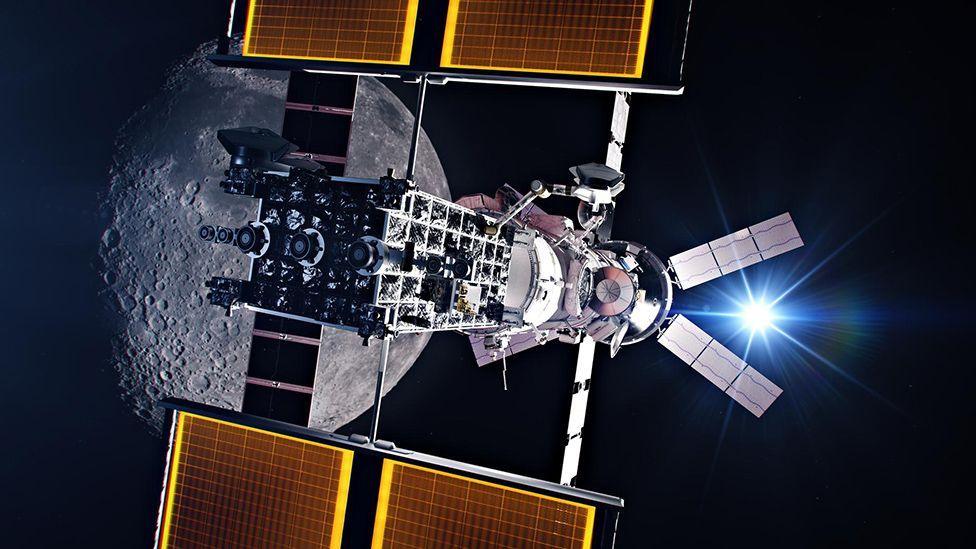Send your questions for NASA 'Mars mission' crew

The crew lived in the specially built habitat for just over a year
- Published
What would it be like to live on the planet Mars?
That's exactly what a crew of four volunteers have been finding out for the last year... but without leaving Earth
They've been living in a small space which was specially built in Texas, USA, to simulate life on Mars.
It's all part of a Nasa Mars mission which ended on Saturday 6 July.
The team of four first entered the Crew Health and Performance Exploration Analog (CHAPEA) habitat, which is based at NASA’s Johnson Space Centre in Houston, Texas, on 25 June last year.
You've got a chance to ask them any question you like about their experience living in a Mars-type environment - just get in touch by leaving your question in the comments below.
More Mars stories
Would you fancy 'living on Mars' for a year?
- Published28 June 2023
What are these 'spiders' on the surface of Mars?
- Published27 April 2024
Scientists discover that a type of moss can grow on Mars
- Published1 July 2024
What did the crew say when they came out?
Mars simulation: Could we live on the red planet?
Nathan Jones, Anca Selariu, Kelly Haston and Ross Brockwell entered the 1,700-square-foot enclosure back on June 25, 2023.
"I am so proud and honoured to be part of this crew and project," said Mission Commander Kelly when the team came out.
"To be a part of a small... part of the work being done here on Earth that will one day enable humans to explore and live on Mars. Thank you so much."
What has the crew been up to over the last year?

The crew celebrated Christmas inside the habitat together
The space the volunteers have lived in for the past 378 days is 3D printed, consisting of four bedrooms, a dining/living area, a workspace with a vertical farm to grow things and a medical room.
During their time in the habitat, the crew members carried out various experiments to measure the impact of life on Mars for possible future missions to the red planet.
Crew members took part in a number of simulated “Mars walks", and also spent time dealing with problems like communication delays with Earth and the maintenance of equipment in tough conditions.
What's the reason for the mission?

Tomatoes were harvested inside the specially built habitat
Nasa is leading a return to the Moon for long-term science and exploration.
The US space agency is looking to land the first woman, the first person of colour, and the first international partner astronaut on the Moon, using new technologies to explore more of the lunar surface than ever before.
It's hoped lessons learned on and around the Moon, and through activities like CHAPEA on the ground, will prepare Nasa for the next big step, which is to send astronauts to Mars.
What's next?
NASA put a call out for applicants for its second simulated one-year Mars surface mission to help them with preparing for the human exploration of the Red Planet in the future.
This next mission will be the second of three, and is scheduled to kick off in spring 2025.

The mission is helping preparations for sending humans to Mars
Like the first mission, it'll involve four volunteers living and working inside the 1,700-square-foot, 3D-printed habitat based at NASA’s Johnson Space Centre in Houston.
The habitat, which is called the Mars Dune Alpha, has been made to simulate the challenges of a real mission on Mars, including limited resources, equipment failures, communication delays, and other environmental factors that are likely to make life on the Red Planet difficult.
More space stories
- Published30 June 2024

- Published21 June 2024

- Published6 June 2024

